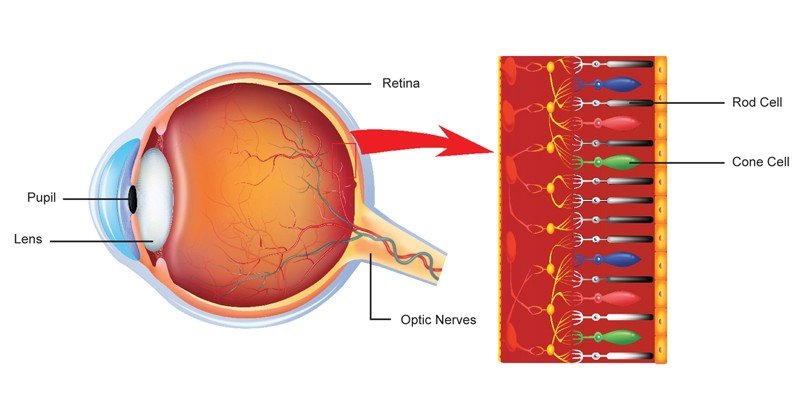Pupil
Both the eyes and the camera have a black dot in the centre. This black dot helps capture an image. In case of the eye, it is called the pupil which is an opening on the iris. It lets the light fall on the retina and acts as a regulator, i.e. it regulates the amount of light falling on the retina. The pupil shrinks when the light is very bright and enlarges or opens wide when the light is dim.
Retina
The retina is the innermost layer of the eyeball. It is composed of several layers of nerve fibres. In the retina, light is converted into electrical impulses with the help of the photo receptors (rod and cones) that are connected with the nerves of the brain. Rod cells are responsible for black-and-white vision in faint light and cones are responsible for colour vision.
Lens
The lens is a transparent biconvex structure inside the eye. It is located behind the iris. There is no blood supply in the lens. These cells receive nutrients from the surrounding fluids. The lens is flexible in nature due to the ciliary muscles that surround it. The flexibility of the lens enables it to see distant as well as closer objects. The main function of the lens is to help to focus the light on the retina.
Optic Nerves
Optic nerves (cranial nerves II) as the name suggests, are the connection between the eye and the brain. They are located at the back of the eye. The optic nerve is made of ganglionic cells or nerve cells. It consists of over one million nerve fibres. The principal function of this nerve is to transfer visual information from the retina to the vision centres of the brain via electrical impulses.


